From the Archives: The 1910 bombing of the Los Angeles Times
- Share via
In observance of the 100th anniversary of the bombing of the Los Angeles Times, reporter Lew Irwin wrote in Oct. 3, 2010, editions:
Shortly after 1 a.m. on Oct. 1, 1910, 100 years ago Friday, a time bomb constructed of 16 sticks of 80% dynamite connected to a cheap windup alarm clock exploded in an alley next to the Los Angeles Times. It detonated with such violence that for blocks around, people ran panic-stricken into the streets, believing that an intense earthquake had hit the city.
The explosion destroyed the Times building, taking the lives of 20 employees, including the night city editor and the principal telegraph operator, and maiming dozens of others. Two other time bombs — intended to kill Gen. Harrison Gray Otis, the publisher of the newspaper, and Felix J. Zeehandelaar, the head of a Los Angeles business organization — were discovered later that morning hidden in the bushes next to their homes. Their mechanisms had jammed.
Eventually, two brothers, J.B. McNamara, who planted the bombs, and J.J. McNamara, an official of the International Assn. of Bridge and Structural Iron Workers union who ordered the attacks, were arrested, convicted and imprisoned.
The attack didn’t stop the Oct. 1, 1910, issue of The Times; it was printed at the Los Angeles Herald.
Irwin’s full article is online: Bombing of The Times in 1910 set labor back a generation.
An earlier version of this photo gallery appeared on Sept. 30, 2011.
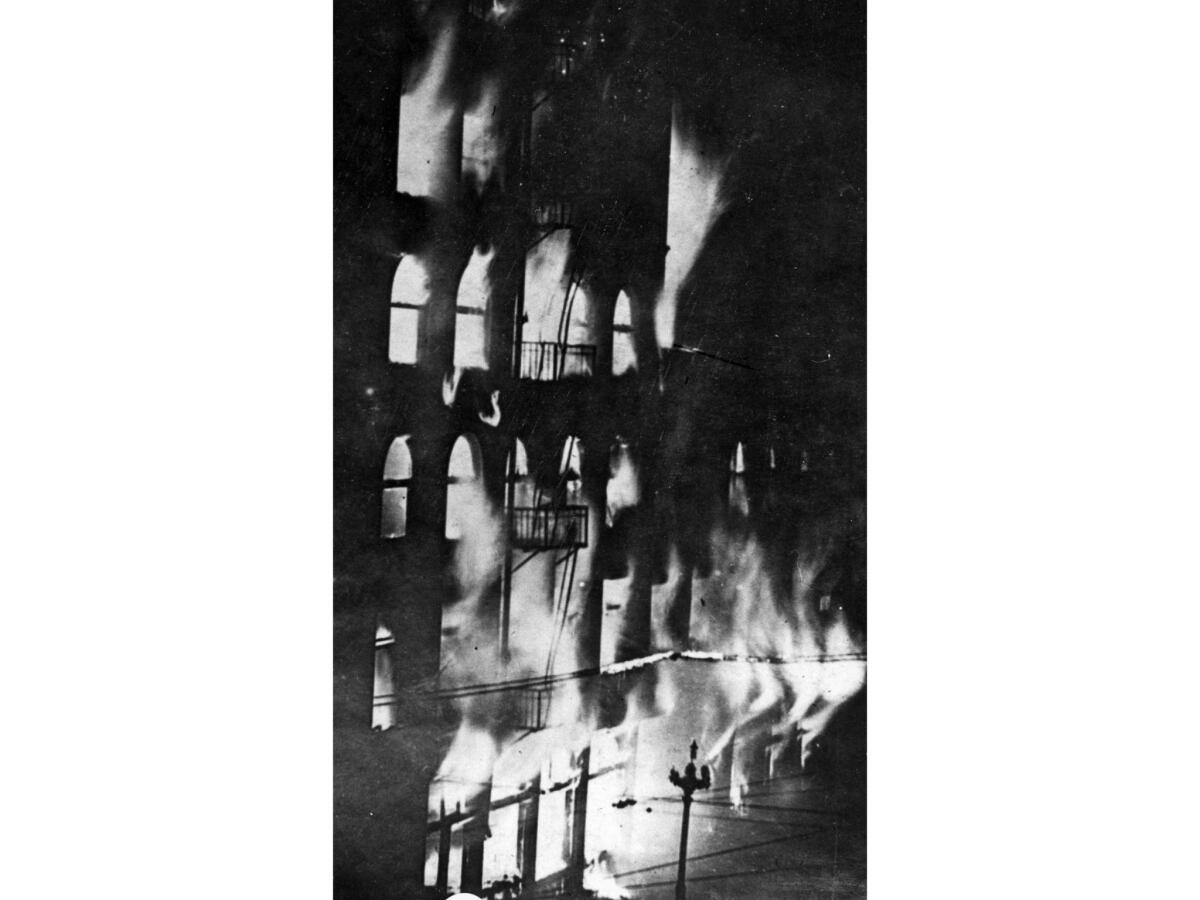
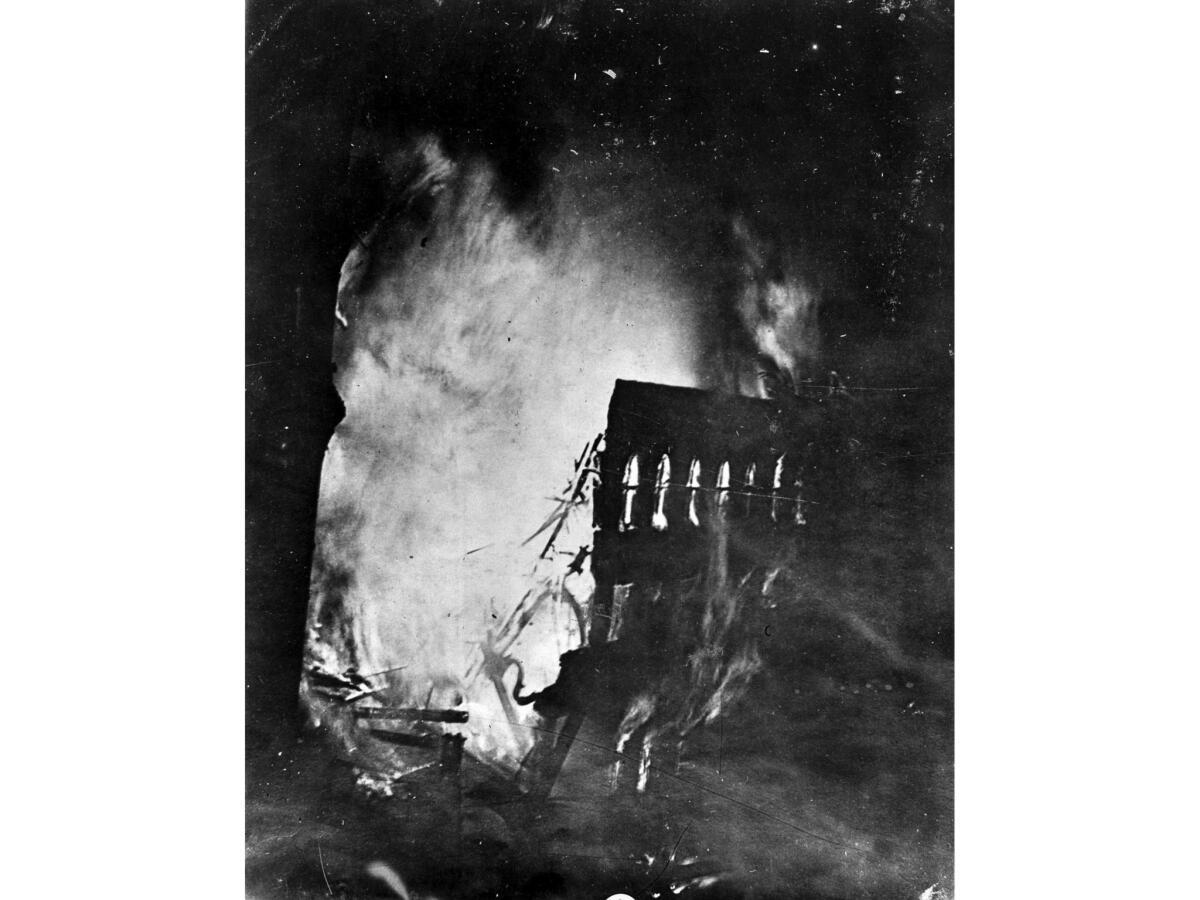
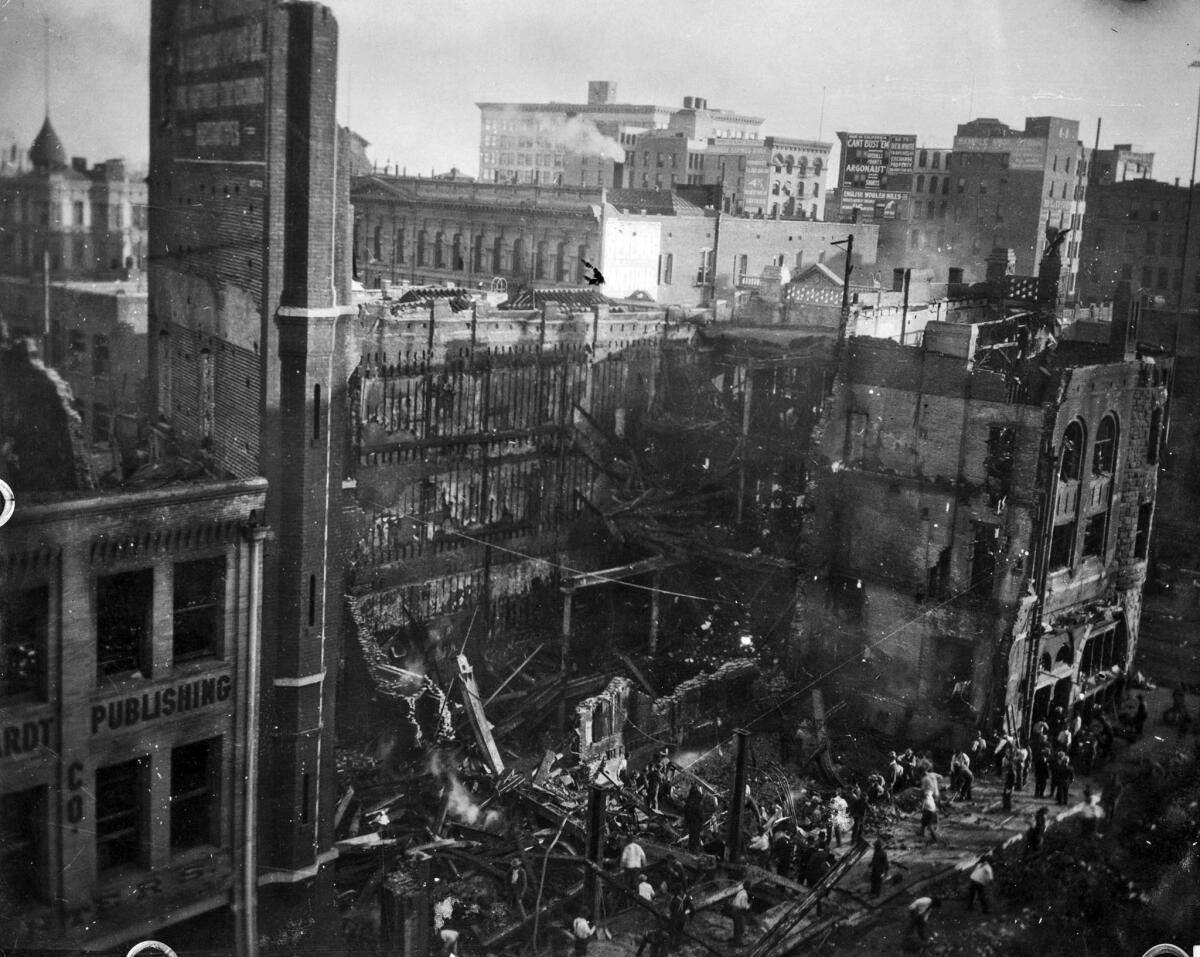
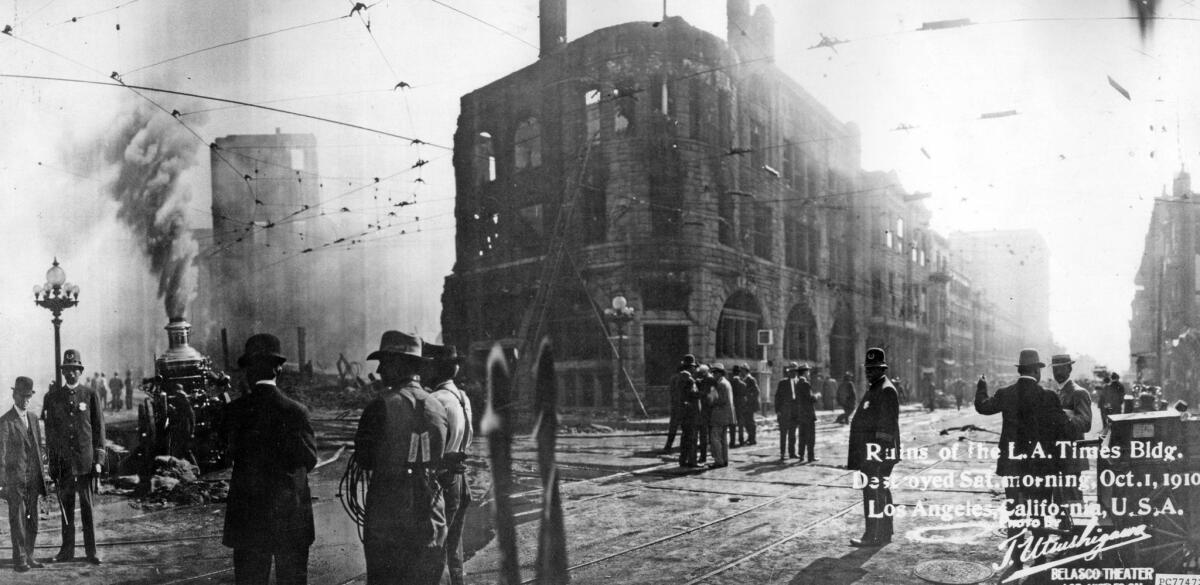
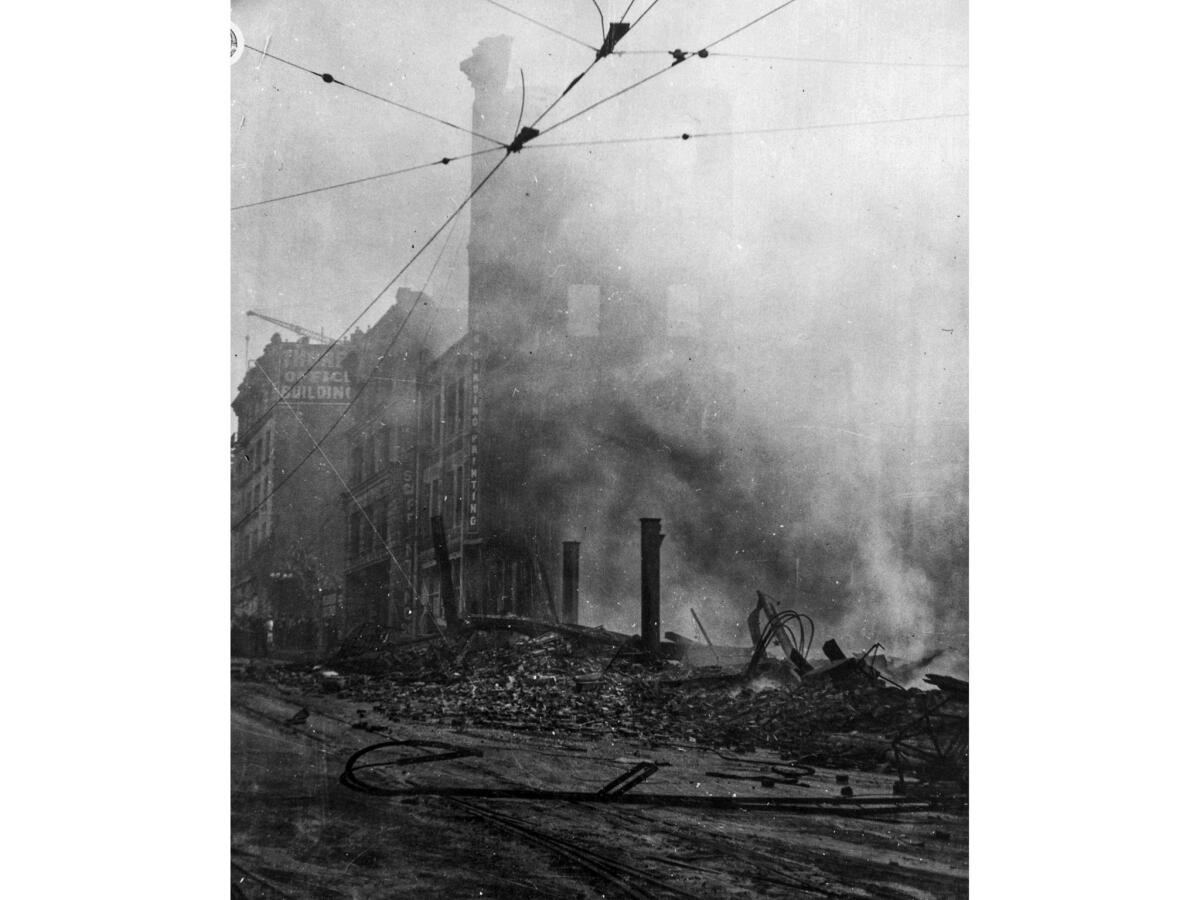
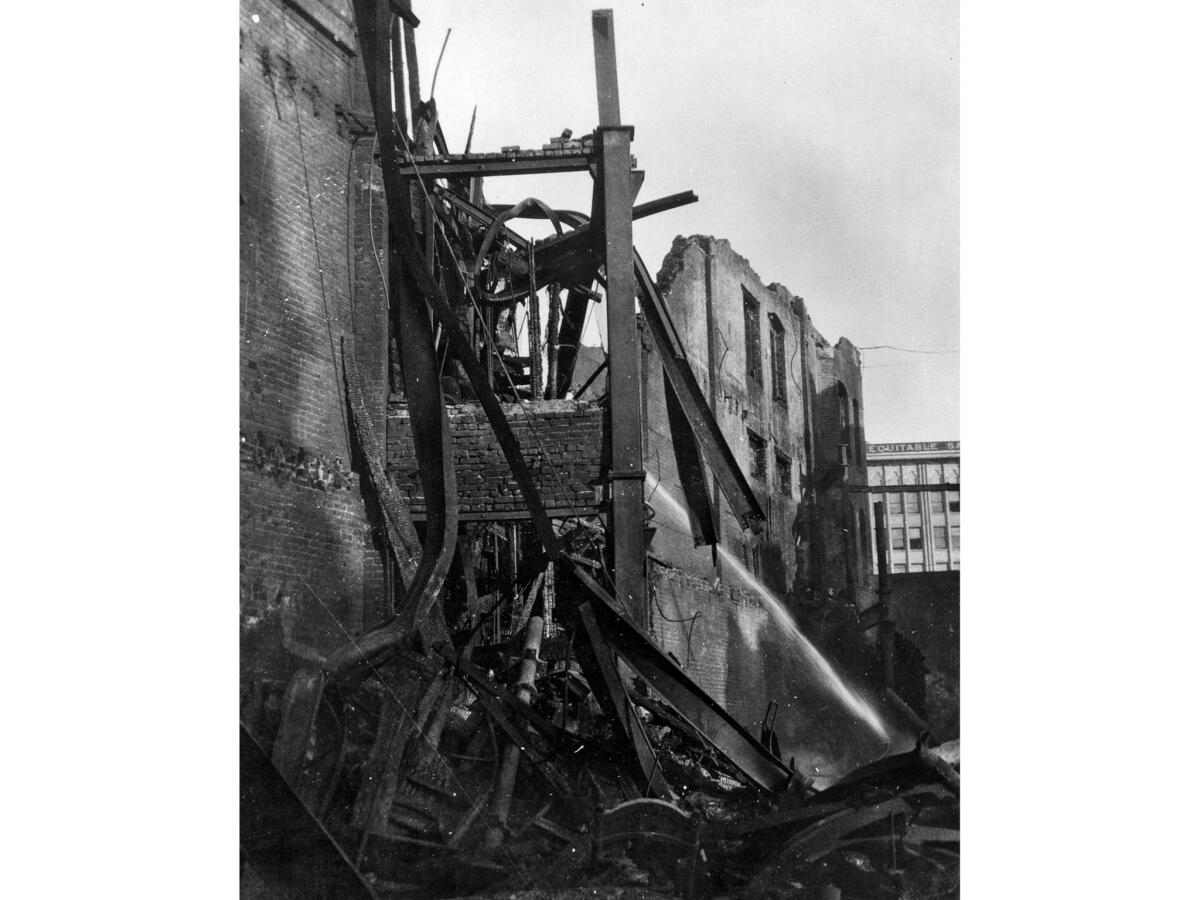

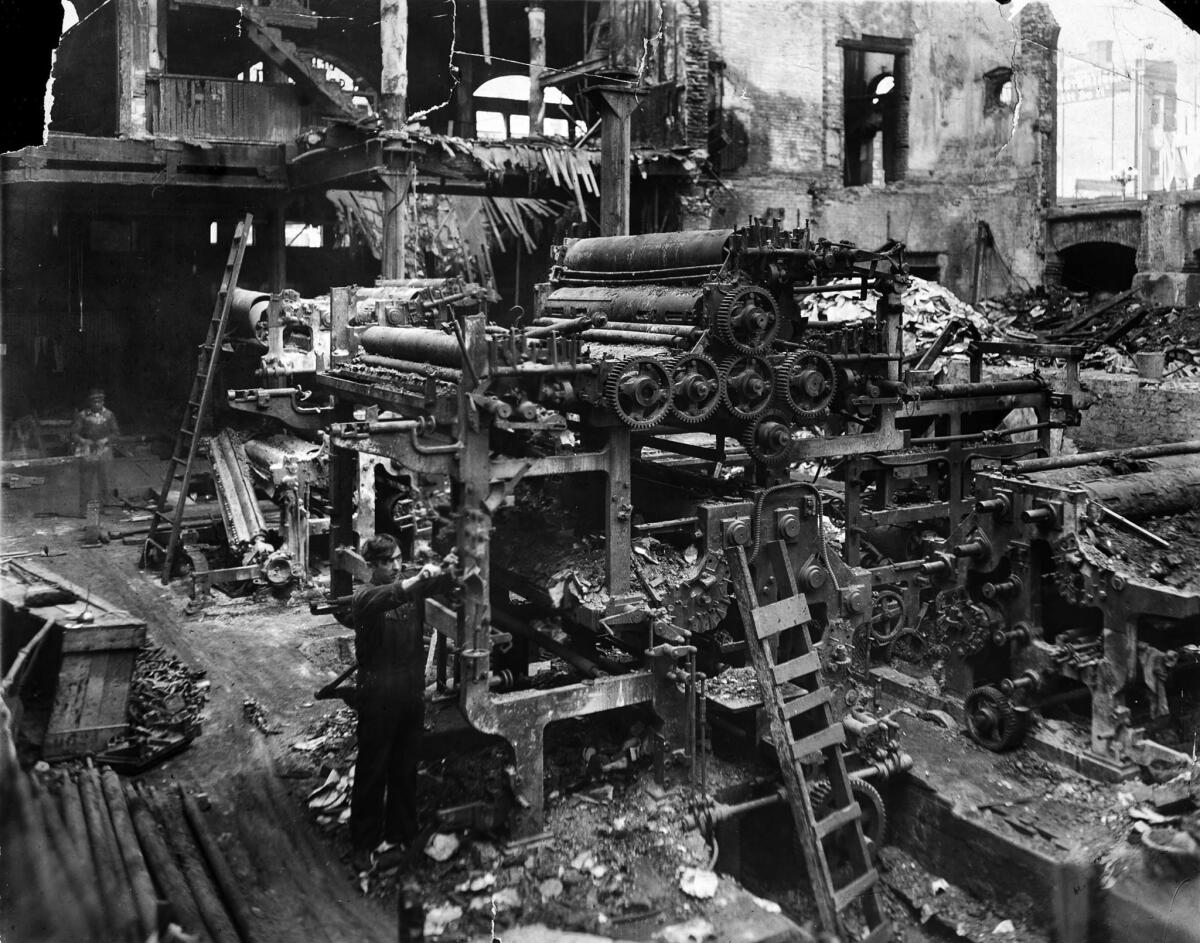
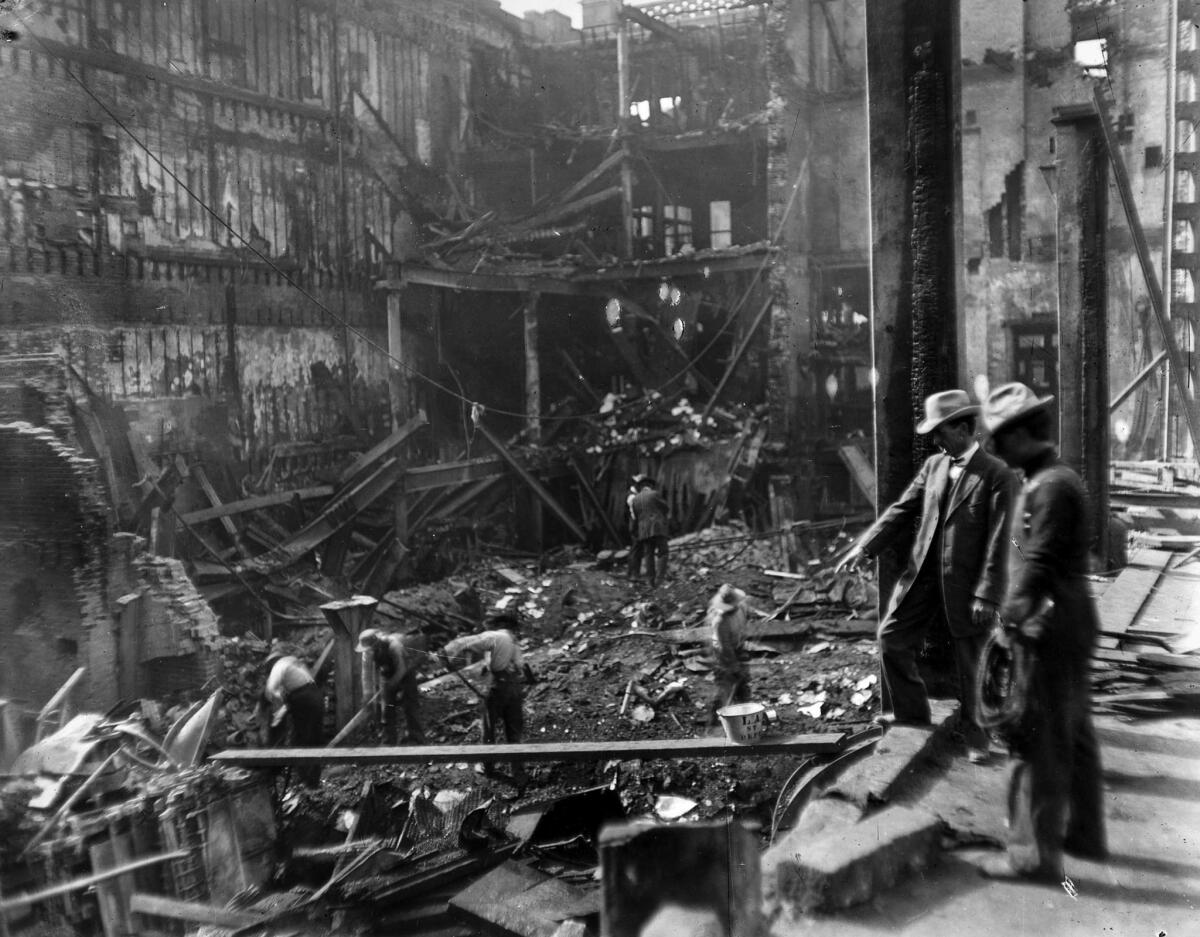
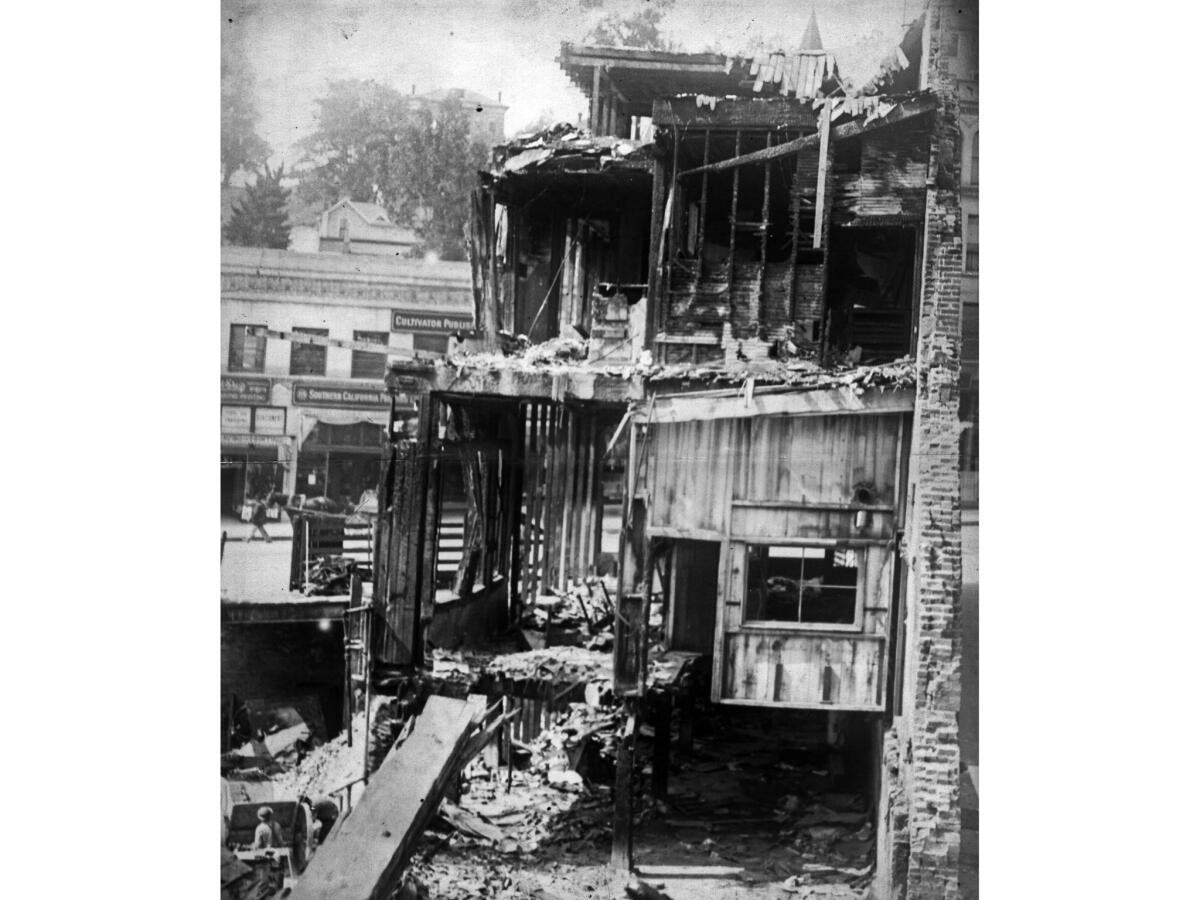

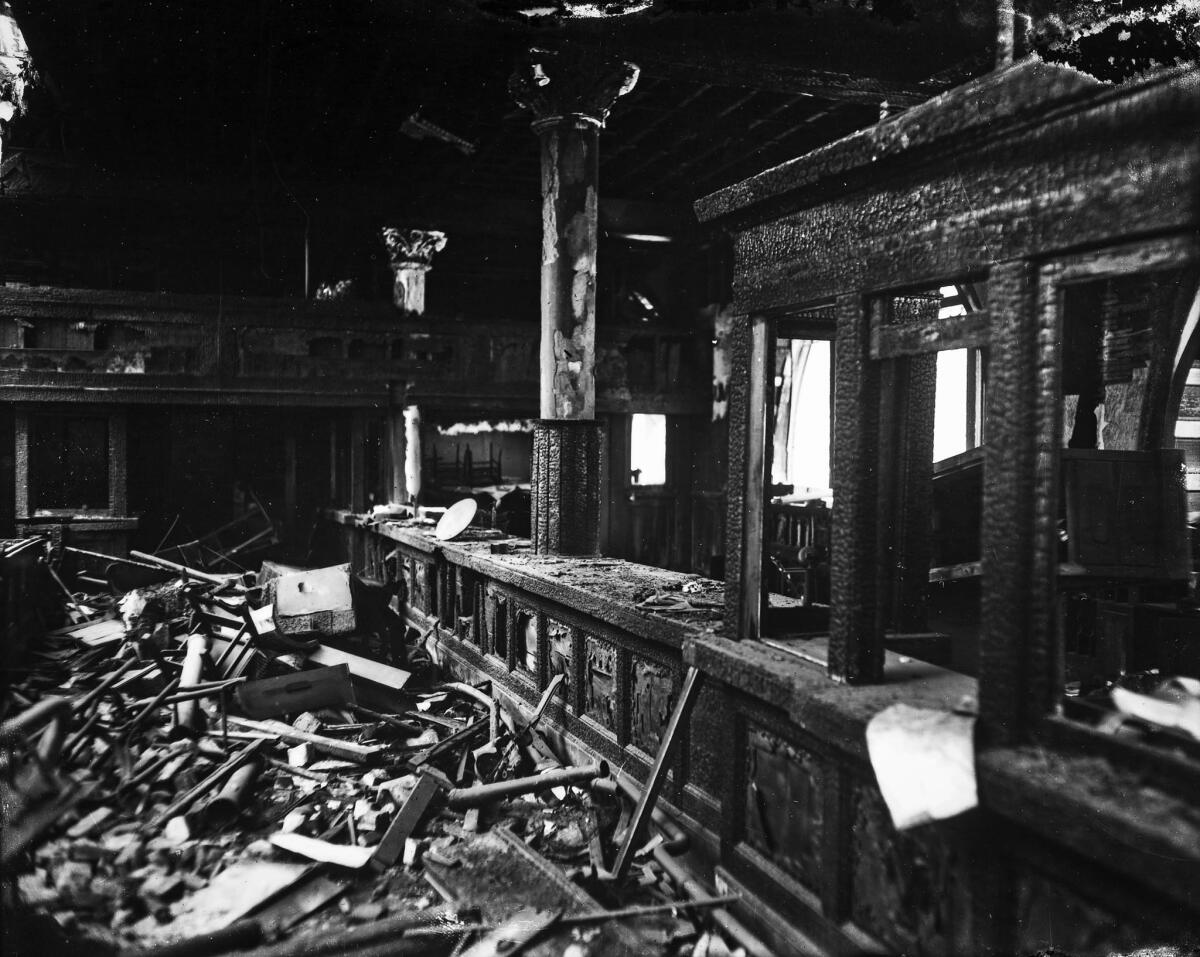
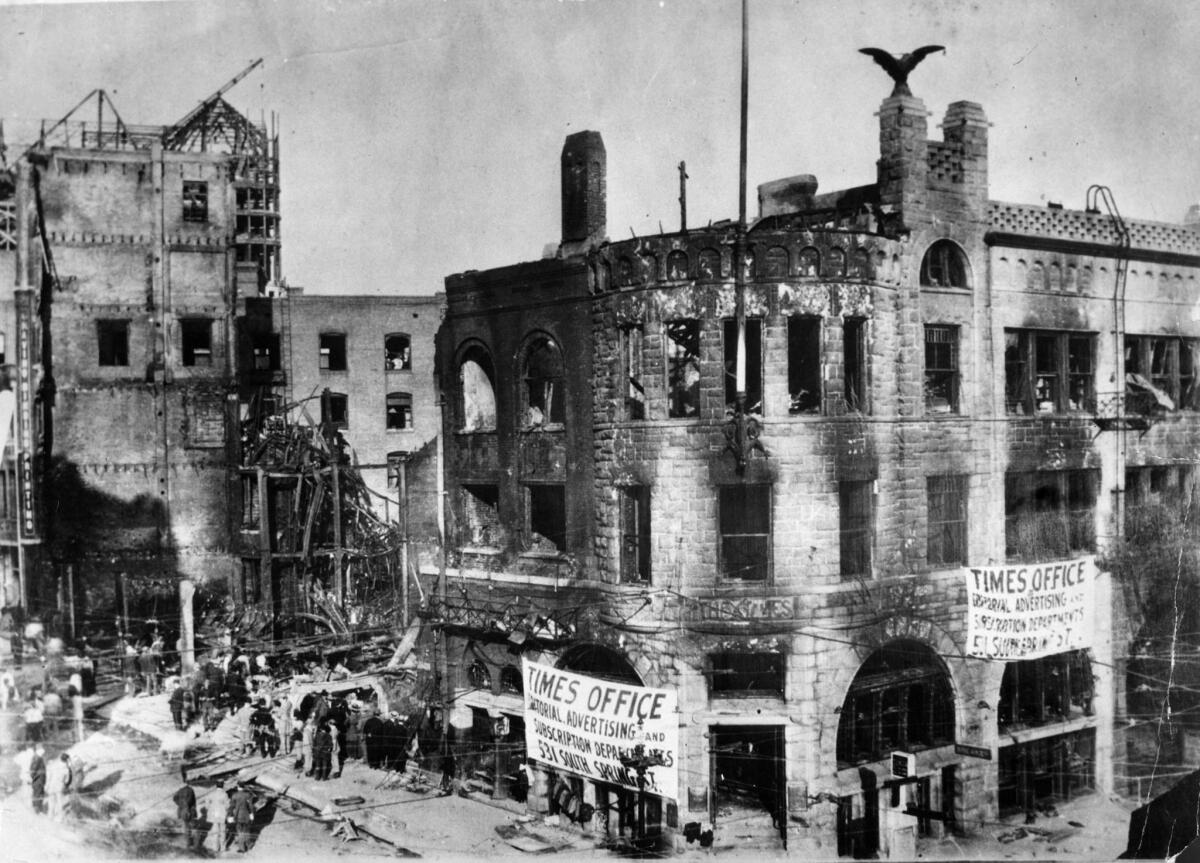
On the back of the above photo was written:
Following the bombing, the newspaper moved its offices to a branch at 531 S. Spring St. A rival paper offered its presses so that the paper could be printed. In a box on the front page of The Times on Saturday, Oct. 1, 1910, Harry Andrews, managing editor of The Times, wrote: “They can kill our men and can wreck out building, but by the God above they cannot kill the Times.”